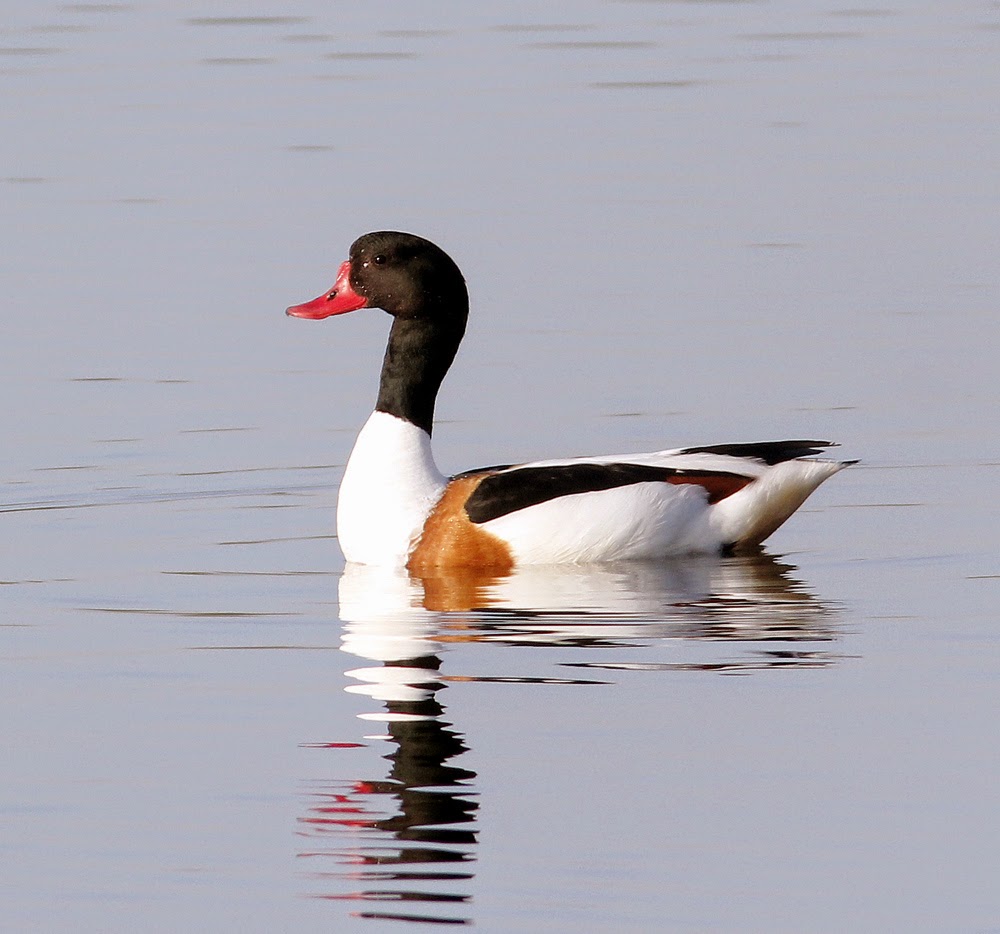The morning started in fine style. Not a cloud in the sky and a promise of sun all day. There was no ringing today so I set off birding camera at the ready as mist began to clear from the ditches and dykes.
Pilling morning, Lancashire
All was quiet at Conder Green save for the usual display flights of the Oystercatchers and the resident Shelducks still sorting out their pairs. I looked across at the far bank hoping to see the elusive Avocets but instead of the expected two I saw four. There seemed little aggression between the four as they all fed together until at one point two flew across to a nearer island. After a few minutes the pair flew back to join the others on the far side of the pool and I turned my attention to what else might be lurking unseen. It was cold and just 3°C at 0730. Visible migration seemed nil apart from a few Swallows and Sand Martins heading north at a fair rate of knots.
Shelduck
Avocets
Avocet
I looked around for other birds and on the water found 18 Shelduck, 16 Oystercatcher, 6 Tufted Duck, 1 Great Crested Grebe, 1 Goosander and 2 Teal. A Kingfisher flew by but didn’t stay. Kingfishers breed not far away along the canal or upstream of the River Conder which just here is little more than a trickle of water at the end of its journey from the inland fells.
In the creeks and on the marsh: 2 Greenshank, 1 Spotted Redshank, 1 Common Sandpiper, 1 Curlew, 4 Little Egret, 1 Grey Heron and 2 Pied Wagtail.
I drove up to Cockersands where the drake Shoveler still frequents the flash flood that will soon dry up. I’d watched him fly in from close by and where I think his mate is hidden on a nest. The handsome Shoveler is now something of a scarce breeding bird in this part of Lancashire whereby a possible breeding pair is quite noteworthy.
Shoveler
Near Lighthouse Cottage a female wagtail was busy collecting nest material while the male looked on. That looks to be a rather fine finishing material she’s collecting for the nest lining.
Pied Wagtail
Pied Wagtail
I heard my first Whitethroat of the year. It was jumping around between the hedge and the bramble fence-line, singing for all it was worth after that long journey from Africa. There was a Sedge Warbler along the ditch too but it sang from low down with just a sub-song at that. Maybe it tuned up later after I‘d hi-tailed it towards the caravan park.
Whitethroat
I noted several Linnets about and also six or eight very mobile Twite. The Twite spent a minute or two on the overhead wires before they twittered off into the distance towards the shore. The Twite is very closely related to the Linnet and carries the colloquial name of “mountain linnet” after its habitat preference for the uplands. A male Twite has a very short yellow beak and no pink chest, unlike the Linnet which has a heavier greyish bill and at this time of year a bright red chest. The call of the two species in flight is similar, but to the trained ear noticeably different.
Twite
Twite
There wasn’t much doing near the caravan park although I did notice much more Brown Hare activity than of late, including a little chasing and sparring. The sunny morning helped me see upwards of 20 hares this morning although not all of them were as obliging as the ones that sit motionless, ears sleeked back and disguised as a clump of earth. Mostly they run from the sound of an approaching vehicle or footsteps. Look closer, it’s a Brown Hare, not a bundle of brown soil.
Brown Hare
Brown Hare
Towards the caravan park: 6 singing Skylark, 6 Tree Sparrow, 4 Goldfinch, 1 Grey Heron, 1 Little Egret and 80+ Lapwing.
Skylark
Fingers crossed for those Lapwings and Skylarks.
Linking this post to Stewart's World Bird Wednesday and Anni's Birding Blog.
Linking this post to Stewart's World Bird Wednesday and Anni's Birding Blog.


















































































